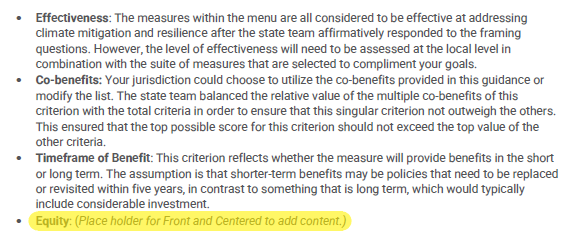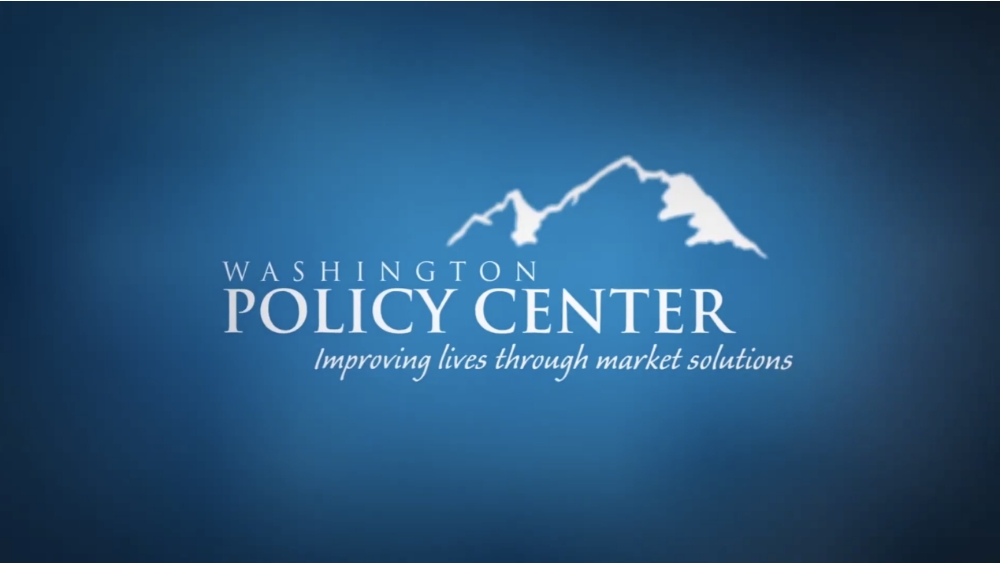During the past two years, Washington state has adopted numerous costly and duplicative climate and energy policies. Despite that, the Legislature adopted a law requiring communities to consider CO2 emissions in their comprehensive plans and provided more than $40 million to help write those new rules. Local communities will also likely have to use additional time and resources, pushing the cost of the requirements even higher.
After the bill failed on the last day of session last year, the Legislature adopted HB 1181 this session. It would add a goal of “climate change and resiliency to the listed goals of the Growth Management Act (GMA).” It would become the 15th goal in the GMA.
The approach of adding climate change to the GMA is odd given the wide agreement that it is not achieving its current goals, which include protecting the environment, ensuring timely permit decisions, encouraging efficient transportation, and making housing affordable. How adding a fifteenth goal, equal in priority to the others, is expected to improve outcomes is unclear.
Despite that, some cities, such as Bothell, were already beginning to add climate change to their comprehensive plans, so the Washington State Department of Commerce offered a draft “Climate Element Planning Guidance” for local jurisdictions.
In addition to the fundamental flaws of adding growth management restrictions on top of the numerous other regulations and subsidies already in place to address the state’s CO2 emissions, the draft guidance has several specific flaws.
WPC’s suggestions to improve the guidance fall into three areas.
 First, the guidance includes an “equity” criterion for jurisdictions to consider. How is “equity” measured or implemented? The Department of Commerce isn’t saying because that section is being written in secret by a left-wing group called Front and Centered, whose principles include “Solidarity and mutuality,” “Intersectionality,” and “Redistribution of Power and Resources.” The text of the draft guidance simply says, “Place holder for Front and Centered to add content.” What is the point of sending a draft to the public if the Department of Commerce is going to hide an issue they claim is critical to implementing the rule?
First, the guidance includes an “equity” criterion for jurisdictions to consider. How is “equity” measured or implemented? The Department of Commerce isn’t saying because that section is being written in secret by a left-wing group called Front and Centered, whose principles include “Solidarity and mutuality,” “Intersectionality,” and “Redistribution of Power and Resources.” The text of the draft guidance simply says, “Place holder for Front and Centered to add content.” What is the point of sending a draft to the public if the Department of Commerce is going to hide an issue they claim is critical to implementing the rule?
This isn’t the first time Commerce has done this. When they adopted the state’s energy strategy, Commerce staff intentionally hid the modeling they claimed supported their conclusions. As we wrote at the time, they repeatedly promised the information would be available prior adoption of the strategy. That turned out to be a lie and they never provided the information.
This pattern makes it appear that Commerce is interested in public comment only from certain groups and only when it confirms their existing bias.
Second, the guidance says jurisdictions should look at the “effectiveness” of the growth management rules they adopt. The definition of “effectiveness,” however, is simply whether a policy could reduce CO2 emissions. That could result in some absurd policy guidance, including banning all cars. It would certainly be “effective,” although the harm of such a policy would be astronomical.
We recommend that effectiveness take into consideration the opportunity cost of each policy. Regulations and taxpayer subsidies should maximize the environmental benefit. If regulations have very high costs for very low environmental benefit, local jurisdictions should choose other, more effective, approaches to reducing emissions. Spending a dollar to save a dime makes no sense and is environmentally destructive because it takes potential funding and effort away from truly effective approaches.
Finally, the plan calls on communities to create an estimate of where the main sources of CO2 emissions are in their jurisdiction. However, their methodology is badly flawed and uses backward-looking estimates rather than future projections. This will lead communities to focus on emissions strategies that simply duplicate existing state law and add nothing to total CO2 emissions reduction.
For example, the guidance calls on jurisdictions to look at electricity-related CO2 emissions. State law, however, requires utilities be net zero CO2 emissions by 2030, so any local effort would be wasteful and would not reduce total emissions.
Fundamentally, there are very few areas where local jurisdictions can make a difference on CO2 emissions. The state has a strict cap on CO2 emissions. It has numerous other policies reducing emissions from transportation, buildings, and other sources already – and many of these simply duplicate each other. Adding yet another layer of duplication on top of those policies is likely to be pure waste.
You can read our full comments about the draft here.
The combination of the flaws in the proposed guidance, combined with a history of failure of the GMA to meet its goals, and the huge amount of resources required to implement these new regulations mean it is likely to undermine efforts to reduce environmental impacts.
Innovation, not more costly and ineffective government planning, is the way to promote environmental stewardship. Adding more complexity and cost to a system that is failing is throwing good money after bad.



